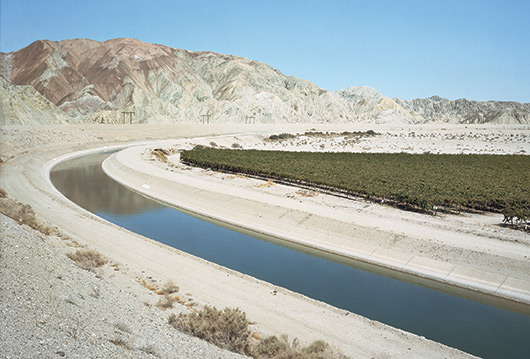
By Scott Fields
Originally published in UCLA Magazine
Maintaining a clean, sustainable water supply is fast becoming the defining challenge of 21st-Century Southern California. Facing the interlocking realities of an expanding population and predicted droughts created by climate change, the region is center stage in a global effort to find solutions.
Water is Los Angeles’ most precious resource and one of its most pressing challenges. In all likelihood, tomorrow’s weather report will be dry — very, very dry.
“We’re looking at historical and prehistorical records of drought that go back more than 10,000 years,” explains Glen MacDonald, UC Presidential Chair and UCLA Distinguished Professor of Geography and director of the university’s Institute of the Environment and Sustainability (IoES). “It’s not a rosy picture.”
In the 12th century, for example, the planet experienced pronounced hemispherical warming due to decreased volcanic activity and increased solar activity. During this period, California and the Colorado Basin suffered a drought of more than 50 years. In the coming years, climate change could bring back those bad old days.
“The more warming, the more likelihood of severe and extended drought,” MacDonald says, pointing to climate models suggesting that by the mid-to-late 21st century, the abnormally low rainfall levels in the Southland over the past few years may very well be the “new normal.” On top of that is a greater probability of 8-to-14-year droughts, such as the prolonged dry spell currently afflicting the American Southwest.
And that’s just a sip of what’s to come, say the experts. How do we ensure that the water we do have is drinkable? Can we create a sustainable water supply? From desalination to reuse to conservation, the challenges are varied and the answers not always clear.
Moreover, like so many other things, what happens in Southern California doesn’t stay in Southern California. Responses to the region’s water issues are being exported to dry lands from Africa and the Middle East to Pakistan, India, Australia and South America.
At the front of these efforts are dozens of UCLA faculty in science, engineering, law, public policy and social science, and Bruin alumni at environmental NGOs in Southern California. At the center of the idea flow is the UCLA Water Resources Group, founded in 2010 as part of the IoES.
Don’t Let the Water Run
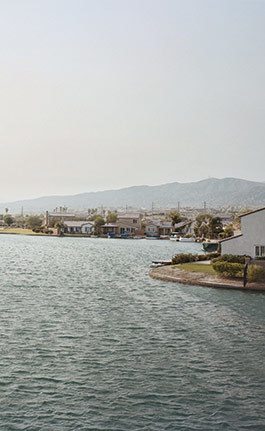
The water catchment area for Southern California, one of the largest in the world, extends out to Wyoming, Colorado and Utah, all areas prone to aridity. With other communities along the way vying for a portion of this water, and with environmental restrictions in place to preserve endangered ecosystems, there’s little hope of garnering more water for an expanding population from the usual supply-side sources.
The solution, then, must come from within the region’s boundaries. But those boundaries leak a lot.
“We must make better use of the water that falls on our city,” says IoES scientist Richard Ambrose Ph.D. ’82, a UCLA professor of environmental health sciences. “Right now we’re sending it out to the ocean as fast as we can, instead of taking advantage of it.”
It doesn’t help that so much of the urban area is covered with concrete — as are its gutters and storm drains — making it impossible for storm water to sink into the soil, or flow into wetlands where it can recharge the groundwater levels.
The installation of bioswales — essentially ditches planted with vegetation that absorb rainwater — is one solution. “When it’s dry around here, so many pollutants from vehicles settle on the concrete surfaces, and so much of that ends up going into the storm drains and out to sea,” Ambrose says. “Bioswales can be of great benefit.”
Restoring wetlands is another solution. The executive director of the National Estuary Program’s Santa Monica Bay Restoration Commission (SMBRC), Shelley Luce D.Env. ’03, is working with government, businesses and scientists from UCLA to restore Ballona Creek and Wetlands.
Luce also runs a project that has planted rain gardens and installed rain barrels at 900 homes in Los Angeles and nearby Culver City. In this project, rainwater either collects in the barrels to be used for irrigation, or else sinks into the ground where it is naturally filtered by the soil and returns to the groundwater or streams like Ballona Creek.
“The local groundwater agency has funded us to do the mathematical modeling necessary to figure out the best locations in the city to get green-street projects like these going,” says Luce. “We’re not only helping families save water, we’ve changed their perception of what the water cycle is all about. We’ve created hundreds of new conservation activists.”
Use Less, Reuse More
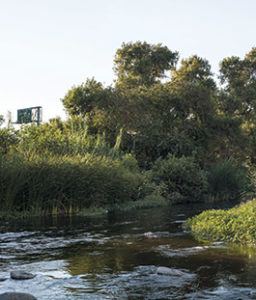
Expanding conservation and reuse practices reduces the tremendous energy necessary to bring water to Southern California from the Colorado River and Sacramento Delta, currently estimated to be about 20 percent of the state’s total energy costs. Wasted water in residential landscape is one culprit. At least 40 percent, and perhaps as much as 60 percent, of Southern California’s residential water is used for this purpose. But smarter planting and more efficient irrigation systems can greatly decrease dependence on imported water.
IoES Adjunct Professor Stephanie Pincetl Ph.D. ’85, director of the California Center for Sustainable Communities, is taking on a water infrastructure mapping project funded by a National Science Foundation grant. “It’s the first map of all the water entities in Southern California — the city water districts, the groundwater-management districts, the pumpers, the sanitation districts,” Pincetl explains. “There’s no transparency in the system now. This will make it much easier to measure the impact of changing conditions when it comes to the climate and other factors.”
Water-reuse projects at UCLA, in fact, have been ongoing for 20 years. IoES Professor Michael Stenstrom of the Department of Civil and Environmental Engineering recalls a Lake Arrowhead study conducted during a drought in the early ’90s. The study demonstrated the ability to take domestic wastewater and treat it to the point where it was cleaner than the lake water the population was drinking. But because the drought ended, the study’s recommended procedures were never adopted for permanent use.
Other reuse programs have had better luck, however. First implemented in 1975, a water-treatment plant completed in 2008 in Orange County is recycling 70 million gallons per day by pumping it down into a groundwater basin. A second plant in El Segundo is recycling 15 million gallons per day, and other small recycling projects are active in the West Basin Water District, a 185-square-mile area that includes El Segundo, Culver City, Inglewood and the South Bay. UCLA scientists and researchers serve on the advisory boards of many of these projects.
Stenstrom and UCLA desalination pioneer Yoram Cohen, professor of chemical and biomolecular engineering, are working on a low-cost residential reuse system in West L.A., where grey (waste) water is treated before reuse for home irrigation.
The Solution from the Sea
Cohen and UCLA Professor of Chemical and Biomolecular Engineering Panagiotis Christofides are overseeing projects involving desalination of ocean water, including a pilot project at the U.S. Naval Base at Port Hueneme. The UCLA-designed-and-constructed smart-water desalination system is producing approximately 12,000 gallons of drinking water per day, enough to satisfy the needs of 24,000 people.
“People forget that the first functional reverse-osmosis membranes were developed at UCLA back in the 1960s, specifically for treating brackish water,” Cohen says, citing the first-ever desalination plant in the world, installed in the Central Valley town of Coalinga. There, saline groundwater was treated to produce potable water.
“We’ve continued to address the provision of high-quality drinking water,” Cohen explains. “Those membranes used in Coalinga and the new generation of reverse-osmosis membranes are capable of rejecting organics, bacteria and viruses from impaired water. They accomplish multiple purposes at the same time.”
Cohen and his team have developed a smart mobile membrane system (SI MS) for treatment and desalination of agricultural drainage water. It can treat up to 60,000 gallons at a time and will be ready for demonstration by winter 2014 in the San Joaquin Valley.
Water and the Law
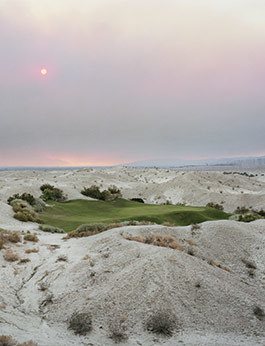
Madelyn Glickfeld ’70, M.A. ’76, director of the IoES Water Resources Group and assistant director for Outreach and Strategic Initiatives, facilitated the connection between Cohen and state policymakers.
“The governor was shocked to find out that a quarter-million people in the Central Valley have no safe drinking water because the wells they’re using draw on groundwater heavily contaminated with nitrates from agricultural fertilizer,” Glickfeld, a member of the Los Angeles Regional Water Board, explains. “I was able to bring Professor Cohen’s work on distributed water-treatment systems for rural areas to the attention of the State Water Board, the Department of Public Health, and the California Department of Agriculture. It was the right moment to bring them a good solution.”
Another important policy specialist in the Water Resources Group is Mark Gold ’84, M.A. ’86, D.Env. ’94, former president of Heal the Bay and now IoES associate director, who is considered a leading expert on coastal protection and water-pollution issues and has authored or co-authored numerous California coastal-protection bills in Sacramento. He participated in the development of Vision 2021 LA in conjunction with the UCLA School of Law’s Emmett Center, which offers an overall sustainability blueprint that includes objectives for water resources and has been endorsed by Mayor Eric Garcetti and several members of the L.A. City Council.
Under Gold’s leadership, the IoES is also working on a three-year project in partnership with the Colorado School of Mines. It focuses on providing Los Angeles with water-management alternatives that will lead to water-quality-standards compliance, increased local water supplies and other benefits such as flood control, recreational open space and habitat.
Water and the Campus
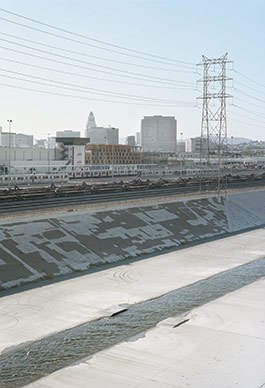
Cohen has been developing self-adaptive systems for treating wastewater from power plants, specifically the massive amount of “blown water” that is used to cool down machinery. The new procedure treats the wastewater to remove particulate matter and reduce salinity, and then places the treated water back into the cooling system. It was demonstrated at the UCLA Cogeneration Plant and is now under consideration for permanent deployment, saving the university approximately 60 percent of the 70,000 to 100,000 gallons a day that would otherwise be diverted to the sewer.
Along with Cohen and other UCLA colleagues, Gold is participating in a water-reuse feasibility study at the school in conjunction with the City of Los Angeles Department of Water and Power and with the Bureau of Sanitation. The team will explore the feasibility of a satellite water plant that would pipe treated water to the UCLA Cogeneration Plant.
For watering the campus, planners are focused on climate-controlled and drip irrigation, drought-tolerant and native landscaping, and some artificial turf. There is also a discussion on the possibility of using laundry wastewater for irrigation at Tiverton House.
If the experts are right, tomorrow will be thirsty. But that rising threat can be quenched because of what happens today in labs and streams and oceans and communities across Southern California.
The challenge is large; the challengers are equally ambitious. As Luce says, “We want to change the paradigm of water in Los Angeles.”
